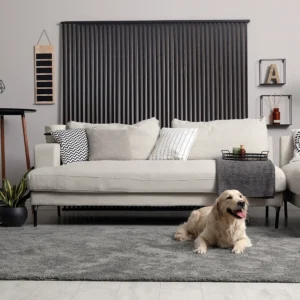Exhibition booths play a critical role in trade shows and events. They provide a platform for businesses to engage with potential clients, showcase products, and enhance their brand presence. Whether you’re a seasoned exhibitor or new to the world of trade shows, understanding the importance of quality booth construction is essential. This guide walks you through the key elements that contribute to creating an exceptional exhibition booth, from planning and design to materials and installation. With careful attention to these factors, you can maximize your return on investment and create an unforgettable experience for your visitors.
1. The Importance of Quality Exhibition Booth Construction
Exhibiting at a trade show or event offers businesses a unique opportunity to interact directly with their target audience. A well-constructed booth, designed by experienced trade show booth manufacturers, can make a significant difference in attracting attendees, leaving a lasting impression, and ultimately generating leads and sales. Quality exhibition booth construction ensures that your booth is not only visually appealing but also functional, durable, and aligned with your brand identity.
A high-quality booth can:
- Enhance Brand Visibility: A professionally designed and constructed booth represents your brand well, making it easier for visitors to recognize and remember you.
- Improve Customer Engagement: A booth built with the right layout and interactive elements can encourage more engagement from attendees.
- Increase ROI: A quality booth helps in driving more traffic, leading to more inquiries, partnerships, and sales, which ultimately results in higher return on investment.
- Ensure Durability: Proper construction guarantees that your booth remains intact throughout the event, reducing the need for repairs or replacements.
2. Planning Your Booth Construction
The first step in creating a quality custom trade show exhibit design is careful planning. A well-thought-out booth can attract the right type of audience and ensure that your objectives are met. Here’s what you should consider during the planning stage:
A. Define Your Objectives
Before any design work begins, establish the goals you want to achieve at the exhibition. These might include:
- Branding and Awareness: Raising awareness about your brand or new products.
- Lead Generation: Collecting potential customer data for follow-up.
- Networking: Building relationships with industry professionals, partners, or influencers.
- Sales: Direct sales or product demonstrations.
B. Budgeting
A quality exhibition booth can come with a significant cost, but it’s important to define your budget upfront. A well-managed budget ensures that you prioritize spending in key areas. Costs to consider include:
- Booth Design – Whether you’re looking for sleek and modern aesthetics or creative and bold designs, exhibition booth design ideas should align with your brand and marketing goals. Investing in a visually striking design can significantly enhance your booth’s impact at trade shows.
- Construction and Materials – The choice of materials can affect both the cost and the durability of your booth. Selecting the right materials for your booth will also impact how well it holds up during transport and setup.
- Technology Integration – Modern booths often feature interactive elements such as digital screens or touchpoints. Incorporating technology can improve engagement but comes with additional costs.
- Graphics and Branding – High-quality graphics that highlight your brand’s identity are essential. A design that reflects your brand’s essence will make a lasting impression on visitors.
- Logistics – Consider transportation, setup, and dismantling costs. These can vary depending on the complexity and size of your booth.
By defining your budget early and keeping these factors in mind, you’ll ensure that your exhibition booth is not only visually appealing but also functional and cost-effective.
C. Space and Location
The size and location of your booth within the exhibition hall will influence the design and layout. Larger booths, such as a 20×40 trade show booth, offer more room for complex designs, while smaller spaces require innovative solutions to maximize the available area. When considering 20×40 trade show booth ideas, think about creating distinct zones within the booth, such as demonstration areas, product displays, and seating for meetings. The booth’s location—whether near the entrance or in a high-traffic area—also plays a role in determining visibility and foot traffic.
3. Booth Design and Aesthetics
The design of your booth is one of the most important aspects of exhibition booth construction. It should reflect your brand identity, capture attention, and be functional for both visitors and staff.
A. Branding
Your booth should clearly reflect your brand’s image, messaging, and values. The design should use your logo, color palette, and brand materials consistently. High-quality graphics and displays that align with your branding help reinforce brand recognition and make a positive impression.
B. Layout and Functionality
The layout of your booth plays a crucial role in determining the flow of traffic and visitor engagement. The space should allow for easy movement, whether visitors are browsing, attending presentations, or interacting with staff. Some key layout considerations include:
- Entrance Design: Make it inviting and accessible to attendees.
- Product Display Areas: Showcase your products effectively, ensuring they’re visible and easy to access.
- Storage Space: Make sure you have enough storage for promotional materials, staff personal belongings, and products.
- Meeting Areas: If you’re planning private meetings, provide a separate, quiet space within your booth.
C. Interactive Features
Interactive elements can create a more engaging and memorable experience. Consider adding:
- Touchscreens or Digital Displays: These can provide product information or serve as interactive presentations.
- Product Demonstrations: Showcasing your products in action can generate interest and attract potential customers.
- Virtual Reality (VR) or Augmented Reality (AR): If it fits your brand, using VR or AR can create an immersive experience for visitors.
D. Lighting
Lighting is crucial for setting the tone and enhancing the booth’s visibility. Proper lighting not only highlights products but also draws attention to key messaging and graphics. LED lights are popular for their energy efficiency and versatility. Ensure that your booth is brightly lit, but avoid harsh or distracting lighting. As a trusted trade show exhibit builder in New York, Chronicle Exhibits LLC understands the importance of lighting in creating an impactful and visually appealing display. We focus on using optimal lighting solutions that complement your booth’s design, ensuring a professional and engaging experience for visitors.
4. Choosing the Right Materials
The materials used in the construction of your booth affect both its appearance and functionality. High-quality materials ensure durability, ease of assembly, and overall aesthetic appeal.
A. Wood and Metal
Wood and metal are the traditional materials used in booth construction. Wood offers a more classic, warm aesthetic, while metal is ideal for modern, sleek designs. Both materials are sturdy, but the choice depends on the look you’re going for and the weight limitations of your booth space.
B. Fabric and Textiles
Fabric is a cost-effective option for covering large areas and creating visually appealing displays. Tension fabric systems are popular for their ability to stretch across frames and create smooth, wrinkle-free surfaces. Fabric displays also allow for high-quality printing of graphics.
C. Modular Systems
Modular booth systems are made from interlocking parts that can be customized and reconfigured for different events. These systems offer flexibility, as they can be easily adjusted in size and shape. They also allow for faster setup and teardown, making them perfect for businesses that participate in multiple trade shows.
D. Eco-Friendly Materials
Sustainability is an important consideration in today’s world. Many companies are opting for eco-friendly materials such as recyclable plastics, biodegradable textiles, and reclaimed wood. Using sustainable materials not only helps the environment but can also serve as a positive brand statement.
5. Installation and Logistics
Once the booth design is finalized, the next step is the installation. A quality booth construction requires an efficient setup and breakdown process to ensure smooth operations at the event.
A. Professional Installation
Hiring a professional team for installation ensures that your booth is built safely and according to the design specifications. A team experienced in booth construction can handle any technical or logistical challenges that arise during the setup and breakdown process.
B. Transportation and Storage
Consider how your booth will be transported to the event venue. Ensure that the materials are securely packed to prevent damage during transit. After the event, many booth construction companies offer storage solutions, so you don’t have to worry about the storage of your booth materials between events.
C. Setup and Teardown Time
Make sure that you allocate enough time for both the setup and teardown of your booth. Some events may allow only limited time for setup, so planning ahead is essential. Efficient assembly and disassembly are important for reducing downtime and ensuring that your booth is ready to showcase your brand on time.
6. Maximizing Your ROI
To get the most out of your exhibition booth, it’s important to think beyond the physical construction. Consider the following strategies to maximize your return on investment:
A. Pre-Show Marketing
Promote your booth ahead of time through email newsletters, social media, and other marketing channels. Invite existing customers, prospects, and industry influencers to visit your booth.
B. Engage Attendees
Staff your booth with knowledgeable and engaging team members who can effectively communicate your brand’s message and offerings. Encourage conversations and take the time to learn about potential clients’ needs.
C. Post-Event Follow-up
After the event, follow up with leads and contacts gathered during the exhibition. Personalized messages, thank-you emails, or special offers can help convert leads into customers.
7. Conclusion
Quality exhibition booth construction is an essential investment for businesses looking to make a powerful impact at trade shows and events. A well-designed and well-constructed booth can help you achieve your objectives, whether it’s raising brand awareness, generating leads, or making sales. By planning thoughtfully, selecting the right materials, incorporating interactive features, and ensuring professional installation, you can create a booth that stands out and delivers a strong return on investment. Keep these tips in mind, and your next exhibition will be a resounding success.






